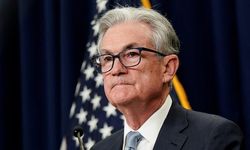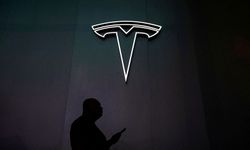Focused on beating inflation, Federal Reserve Chairman Jerome Powell warned in 2022 that a high interest rate policy would offer a bitter prescription in the form of widespread layoffs and higher unemployment.
However, Powell told reporters in different terms last month, saying, "We have a very strong labor market and inflation is coming down."
How has the US, the world's largest economy, managed to stay so healthy with robust growth and low unemployment despite high interest rates that aim to rein in inflation but typically lead to recession?
Experts attribute it to an unexpected productivity boom. This is due to the high productivity that small and medium-sized companies have managed to achieve in the last year.
Investment in robots and machines
Batesville Tool & Die, a global supplier of precision metal stamping components and assemblies, operates in a town of about seven thousand people near the state of Indiana.
Last year, the company advertised for 70 jobs to meet growing demand, but was unable to compete with large companies such as Honda and Cummings Motor and was unable to fill the vacancies in an environment of very low unemployment.
The company then turned to robotics, investing in machines that can mimic workers and systems that increase the efficiency of robots.
The chronic shortage of workers has meant that companies like Batesville Tool & Die, which are looking for workers to meet growing demand, are unable to compete with existing market conditions.
"Magic potion"
According to economists, strong productivity creates a kind of "magic potion" effect for the economy. "You can get faster income growth, faster wage growth, faster GDP growth without creating inflation," says Austan Goolsbee, president of the Federal Reserve Bank of Chicago, likening increased productivity to a "magic beanstalk" for the economy.
When companies use more efficient machines or technologies, their workers can become more productive and their output per hour increases.As a result, companies can increase their profits overall.Increased dividends also pave the way for employee wage increases without triggering inflation.Inflation can also be kept in check as companies do not need to raise prices to raise wages.
The result:Productivity boom
Much has changed as the economy emerged from the pandemic recession in 2020 with unexpected strength and businesses have struggled to rehire the large numbers of workers they laid off.
The resulting labor shortage caused wages to rise. As factories and ports buckled under the pressure of rising consumer orders, inflation spiked and parts shortages emerged.
Faced with these challenges, companies accelerated their investments, first in automation, then in equipment, research and development and other forms of intellectual property. The impact of these investments began to bear fruit a year ago. In the years before the pandemic, the average growth rate was around 1.5 percent.
Labor productivity increased by 3.6 percent annually from last April to June, 4.9 percent from July to September and 3.2 percent from October to December.The study also found that chatbot users were 14 percent more productive than their non-user counterparts.
The biggest increase in productivity came from the least experienced and least skilled workers, at 34 percent.Meanwhile, there is widespread fear that automation and machines will replace humans and kill jobs.Some workers who are replaced by robots find it hard to find a new job and often settle for lower wages.But history shows that in the long run, technological advances actually create more jobs than they destroy.
Today's productivity boom, on the other hand, is thought to be linked not only to advanced technology but also to worker satisfaction.
The possibility of moving from unskilled work to more productive work for more pay may offer opportunities to offer people a more productive and interesting life, perhaps beyond the scary scenarios.















